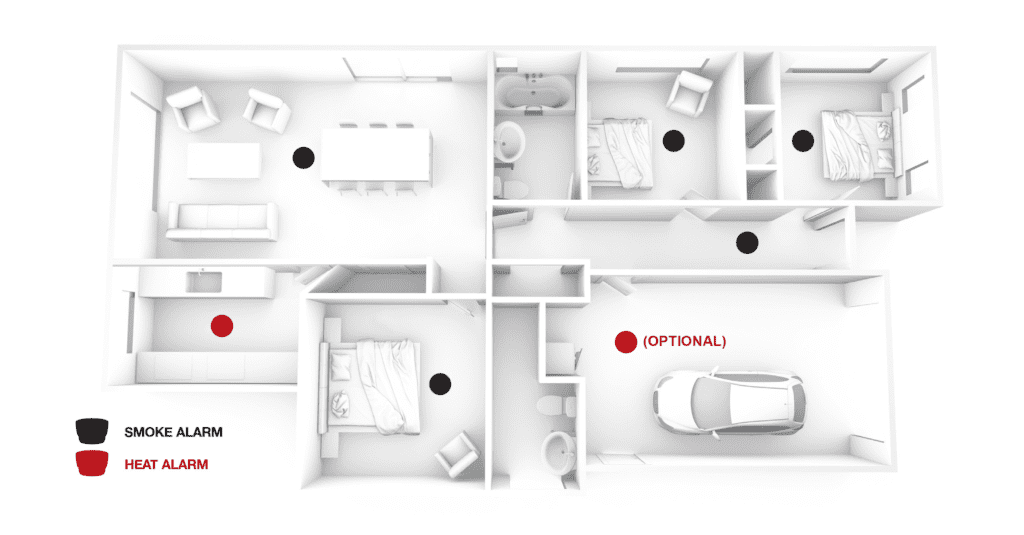From November 2024 the NZ Building Code Acceptable Solutions for Protection from Fire (C/AS1 and C/AS2) has been amended to make interconnected smoke alarms the minimum fire safety system for new built homes and consented renovations, citing NZS 4514:2021 – Interconnected smoke alarms for Houses. The standard allows for wirelessly or hard-wired interconnection, using either 10 year long-life battery-powered, DC low voltage or 240v mains powered alarms.
Below are the key points of the changes to the acceptable solutions but it is important that you read the details in the Standards New Zealand – NZS 4514:2021 interconnected smoke alarms for houses document, click here to download.
KEY POINTS:
For full details, refer to NZS 4514:2021 – Interconnected Smoke Alarms for Houses.
The optimal location for any smoke alarm is in the centre of a room, taking into consideration factors such as fans, beams, or other fixtures that may delay detection or cause nuisance alarms. Smoke alarms should not be placed near heat pumps, air vents, or HVAC systems, as these can also lead to false alarms or can alter smoke behaviour. Always follow the manufacturer’s installation instructions and the guidance provided in the Building Code.

The CAVIUS Wireless Family range of smoke alarms fully complies with the updated New Zealand Building Code. We offer both 10-year battery-operated and 240v mains-powered smoke alarms, as well as heat alarms and a smart remote control system.
By following these updated requirements and installing compliant alarms, you can ensure your home meets New Zealand’s latest fire safety standards
On Point Distribution Partners Ltd
58a Poplar Lane, Papamoa, Bay Of Plenty 3187
Hours; Monday – Friday 8.30am – 5pm
Contact: +64 7 5738670 info@cavius.co.nz
2025 CAVIUS. All right reserved.